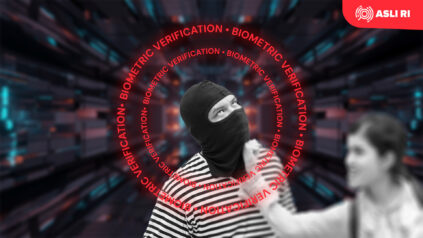Most people are already familiar with facial recognition. It is the technology that enables identity verification through matching and comparing facial biometric data from its vast database. We can see this technology in use when we try to access our smartphone/laptop or log into our social media accounts with the facial verification security feature active. Facial recognition is also known to be used to track and identify criminals by the police. Despite its crucial uses in several industries and agencies, one might think that this system alone is enough to secure their digital business processes. Unfortunately, fraudsters have become more advanced, finding even more ways to fool the system. Here is where liveness detection comes to the rescue. Read this article to learn more about how liveness detection can be a safety net for your business.
Is facial recognition by itself still secure?
With the progression of technology, fraudsters have found many ways to bypass facial recognition security. Among these tactics is using deepfakes. Deepfake technology enables fraudsters to ‘stick’ a new face on a picture or video of another person. Deepfakes have become increasingly convincing to the human and machine eye as current artificial intelligence are more sophisticated.
The graph above comes from a survey done by IProov. It shows what people perceive as the threats of deepfake. More than 40% of people surveyed worried that fraudsters will exploits deepfakes to commit identity theft and access bank or other accounts. They are also concerned that fraudsters can use their stolen identity to open bank accounts using their data. The survey shows that security regarding identity theft through deepfakes is a worrying issue.
That is because fraudsters can make fake faces have the same facial features as real faces. For example, a hacker could use photos of your face taken from social media to create a false face that is indistinguishable from your genuine face. Fraudsters then can use this fake face to access your devices or accounts that use facial recognition for authentication. Similarly, a hacker could use a pre-recorded video of your face, like deepfakes, to spoof a facial recognition system by playing the video in front of the camera. The artificial intelligence system would then identify the face in the video as your face, even when a person is not physically present during the digital process.
Liveness detection can mitigate the issues posed by deepfakes and adds extra layers of security for your business. With this new technology, facial biometric verification can now be more secure.
How does liveness detection supplement facial recognition?
While facial recognition does not carry the ability to distinguish fake faces and live faces, liveness detection can help identify whether or not the object ongoing the process is human and not a photo or recorder video played in front of the camera.

The image above shows how ASLI RI’s liveness detection system works. Our system only requires the user to take a selfie photo. It is a much simpler approach, as other liveness detection systems may require the user to blink or speak a few words during the process. Our artificial intelligence then scans the face and detects whether or not the selfie is taken live or fabricated by fraudsters through the use of masks or deepfake. The process utilizes an advanced biometric and artificial intelligence to differentiate live features from falsified representations. Our system also analyzes the fourier domains of the face and its texture content to ensure that the photo is taken live. Once the system completes the detection process, it produces a statement of the result.
The graph above comes from a survey done by respondents from various countries in Southeast Asia by FICO. It shows the frequency of digital processes needed to open an account. Most digital processing in all surveyed countries require proof of identity. Digital processing using biometrics and passwords vary from country to country. In Indonesia, biometric authentication accounts for 56% of all processes. This number is the 2nd lowest of all the countries surveyed. With the number of recent data breaches cases increasing, extra steps such as using liveness detection are crucial to ensure a secure authentication process from fraudsters.
An extra layer of security for your business
As identity forgery cases and spoof attacks continue to rise, staying one step ahead of fraudsters becomes crucial. Implementing facial recognition, combined with liveness detection, can help. You can explore our liveness detection system further by contacting us through www.asliri.id and request a tailored demo for your business needs.
deepfakes fight spoofing identity fraud Liveness Detection security measure
Last modified: September 20, 2023











